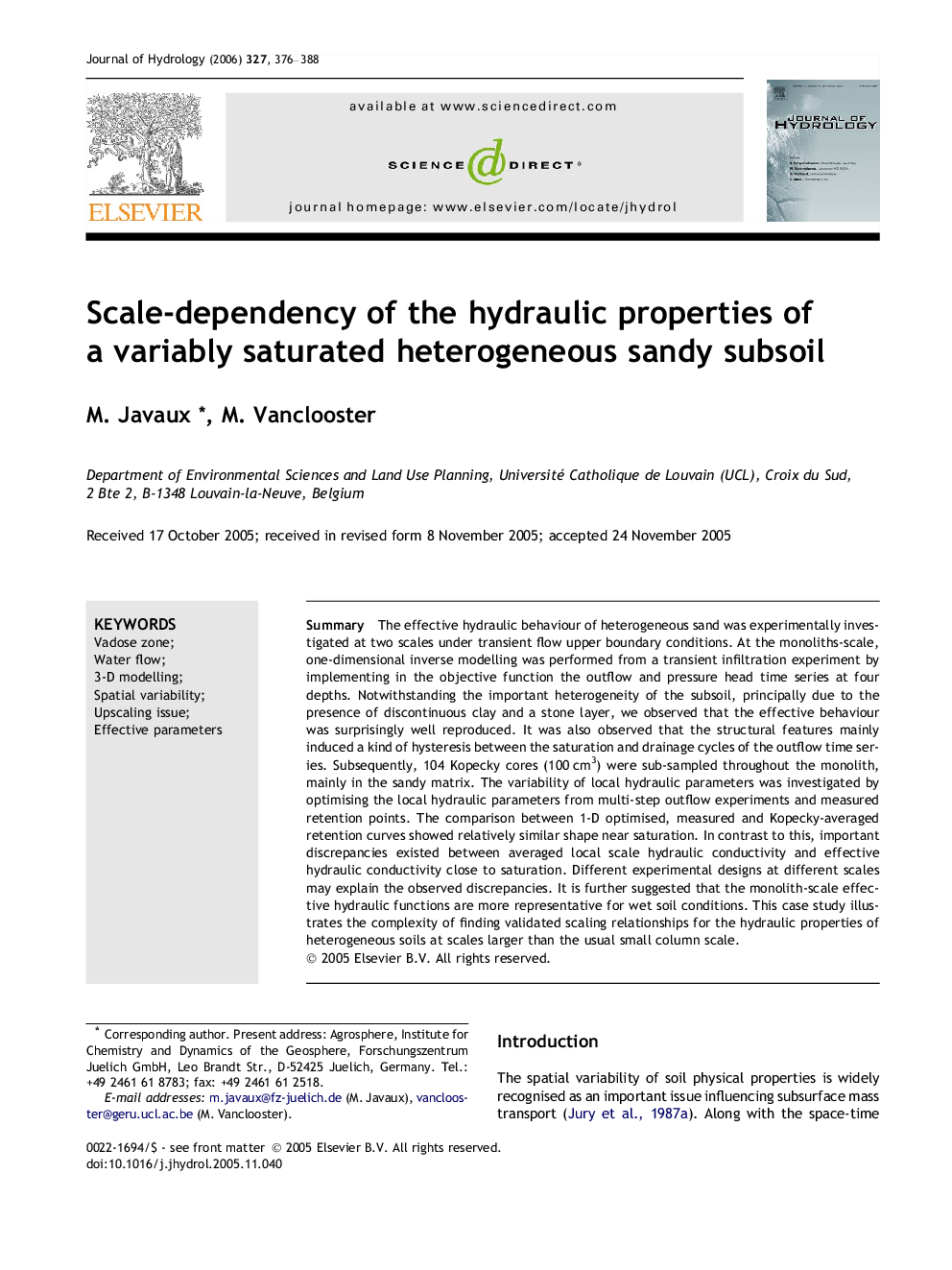| Article ID | Journal | Published Year | Pages | File Type |
|---|---|---|---|---|
| 4580260 | Journal of Hydrology | 2006 | 13 Pages |
SummaryThe effective hydraulic behaviour of heterogeneous sand was experimentally investigated at two scales under transient flow upper boundary conditions. At the monoliths-scale, one-dimensional inverse modelling was performed from a transient infiltration experiment by implementing in the objective function the outflow and pressure head time series at four depths. Notwithstanding the important heterogeneity of the subsoil, principally due to the presence of discontinuous clay and a stone layer, we observed that the effective behaviour was surprisingly well reproduced. It was also observed that the structural features mainly induced a kind of hysteresis between the saturation and drainage cycles of the outflow time series. Subsequently, 104 Kopecky cores (100 cm3) were sub-sampled throughout the monolith, mainly in the sandy matrix. The variability of local hydraulic parameters was investigated by optimising the local hydraulic parameters from multi-step outflow experiments and measured retention points. The comparison between 1-D optimised, measured and Kopecky-averaged retention curves showed relatively similar shape near saturation. In contrast to this, important discrepancies existed between averaged local scale hydraulic conductivity and effective hydraulic conductivity close to saturation. Different experimental designs at different scales may explain the observed discrepancies. It is further suggested that the monolith-scale effective hydraulic functions are more representative for wet soil conditions. This case study illustrates the complexity of finding validated scaling relationships for the hydraulic properties of heterogeneous soils at scales larger than the usual small column scale.
